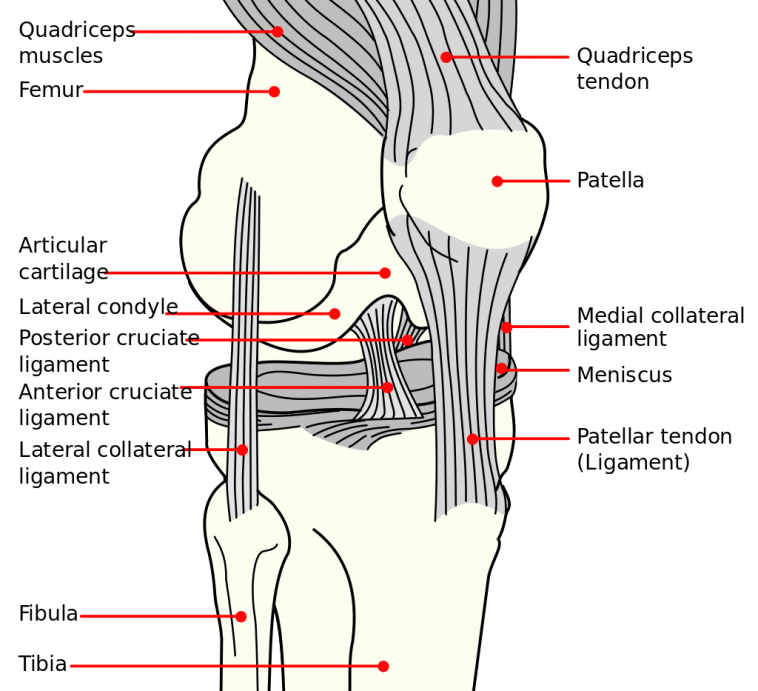- Like
- SHARE
- Digg
- Del
- Tumblr
- VKontakte
- Flattr
- Buffer
- Love This
- Save
- Odnoklassniki
- Meneame
- Blogger
- Amazon
- Yahoo Mail
- Gmail
- AOL
- Newsvine
- HackerNews
- Evernote
- MySpace
- Mail.ru
- Viadeo
- Line
- Comments
- Yummly
- SMS
- Viber
- Telegram
- JOIN
- Skype
- Facebook Messenger
- Kakao
- LiveJournal
- Yammer
- Edgar
- Fintel
- Mix
- Instapaper
- Copy Link
Introduction
The tearing, ripping or overstretching of the anterior cruciate ligament is called an ACL tear or injury. ACL tears are rather common. While women are prone to this injury more than men, teenagers today are also getting affected by this at an increasing rate. This is because kids are highly involved in organized sports and games and also because of advanced testing and more awareness about ACL tears.
Mostly, ACL injuries are not because of contact. They are caused by non-contact motions. Some possible things which might cause ACL injuries are:
- Suddenly stopping or changing direction while moving.
- A sudden jump, turn, or movement.
- Overstretching the knee
- A direct forceful blow in the knee, causing the knee to move away from the leg.
When the anterior cruciate ligament is injured, the injury or tear can affect either the entire ligament or just a part of it. This implies that the tear can be absolute or partial. A parietal tear involves tearing off a portion of the ligament, while a complete tear involves tearing of the ligament in two pieces.
How do I identify an ACL tear in the knee?
Someone who suffers from a tear in the ACL will start experiencing some symptoms shortly or immediately after the injury. Some of these symptoms are listed below.
- Sharp, stinging pain initially: Symptoms of ACL are immediate. The person suffering from the problem will feel a sharp pain rooting from the inner parts of the affected knee.
- Tenderness around the affected area: The knee whose ligament is injured will become tender and it will be painful to touch the affected parts.
- Bruising: There will be bruising around the knee, indicating an internal injury.
- Numbness around the knee: After a severe ACL tear, a person may lose sensation knee below and experience numbness in the leg.
- Swelling: Almost immediately after the injury, the affected area starts to swell. Sometimes. Swelling develops after a few hours and can last for over a week.
- Instability in the knee: The patient might get the feeling of instability, shakiness, or buckling of the knee. This would mean the inability of the knee to bear any weight.
- Limited range of movement: Because of the deep pain and shakiness, the patient is not able to move the knee and leg properly without experiencing excruciating pain.
- Inflammation: In some cases, the knee and affected area starts to feel warm. This happens because of bleeding within the knee joint.
When should I visit a doctor for an ACL injury?
One should seek immediate consultation if there are symptoms of an ACL tear or injury. With some online research, a good hospital with an expert team can be found in Delhi. ACL injuries tend to deteriorate with time if efficient consultation and treatment are not there. The knee joint is a complex structure of bones, ligaments, tendons, and muscles, and one needs a trusted and experienced doctor to take care of this problem. So, an experienced and skilled doctor in Delhi will greatly help in treating ACL injuries.
How are ACL tears and injuries diagnosed by doctors?
The diagnosis of ACL tears can be done in two ways. The first way requires a detailed physical examination of the affected area. The swelling, tenderness, pain points, and the range of mobility of the affected knee are examined thoroughly by the doctor. This is done with the help of passive motions or moving the affected area with our without bearing any weight.
The second way requires a physical examination and running scans and tests on the patient. The doctor may suggest an X-ray or MRI. Mostly, MRIs are considered for looking into a ligament injury. The scans help in diagnosis as well as ascertaining the treatment options based on the degree of damage.
Is ACL reconstruction surgery required and what does it consist of?
The anterior cruciate ligament does not have the ability to heal by itself. Once injured severely, it requires surgery for its repair.
ACL Reconstruction surgery is the most advanced treatment option available. Although it is not a complicated procedure, it requires skill. Surgeons performing this procedure need in-depth, intricate knowledge of the condition and expertise and have to know what is the best alternative for their patients. Such expert ACL treatments can be found in Delhi with a little bit of research.
The surgery involves replacing the damaged ligament with a healthy one. The healthy ligament can be obtained from two sources- either from a donor or from another part of the knee.
Once the surgery is done, a rehabilitation course is started. In the course, exercises and stretches are suggested to the patient by a physiotherapist so that the ligament can get back to normal and a full range of motion can be regained.


